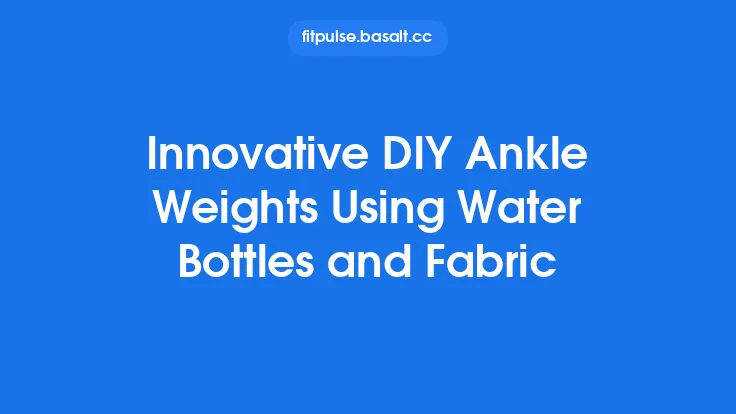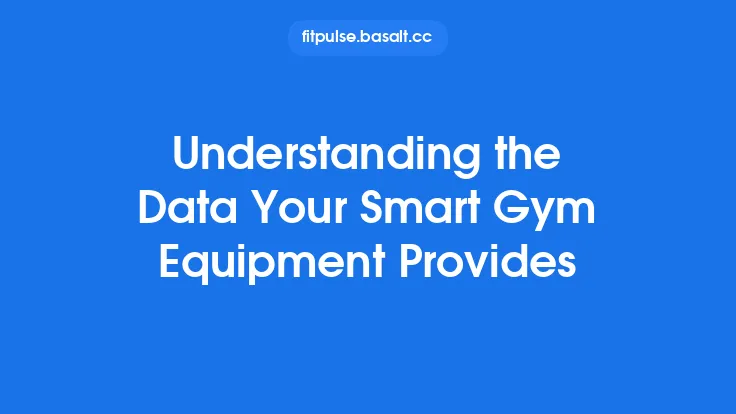Staying properly hydrated is a cornerstone of overall health, athletic performance, and everyday well‑being. While the classic reusable bottle does the job of holding water, a new generation of smart water bottles promises to do much more: remind you to drink, track intake, analyze patterns, and even sync data with your favorite fitness ecosystem. With a growing market of devices that vary in sensor technology, app integration, battery life, and design, choosing the right bottle can feel overwhelming. This guide breaks down the most important, evergreen factors to consider, compares the leading models on the market, and helps you decide which smart bottle will keep you consistently hydrated over the long term.
Key Features to Evaluate
| Feature | Why It Matters | Typical Implementation |
|---|---|---|
| Hydration Tracking Method | Determines how accurately the bottle measures intake. | Flow sensors, weight sensors, capacitive touch, or optical detection. |
| Reminder System | Keeps you on schedule, especially during busy days or long workouts. | Vibrations, LED cues, push notifications, or audible alerts. |
| App Ecosystem | Enables data visualization, goal setting, and integration with other health tools. | Native iOS/Android apps, optional web dashboards, API access. |
| Battery & Charging | Impacts convenience and long‑term reliability. | Rechargeable Li‑ion, USB‑C, magnetic dock, or replaceable coin cells. |
| Material & Build Quality | Affects durability, taste neutrality, and environmental impact. | BPA‑free Tritan, stainless steel, double‑wall insulation. |
| Data Sync Options | Determines how seamlessly the bottle talks to your existing fitness stack. | Bluetooth Low Energy (BLE), Wi‑Fi, QR code pairing, or NFC. |
| Customization & Personalization | Allows you to tailor reminders, daily targets, and visual themes. | In‑app settings, multiple user profiles, smart‑coach algorithms. |
| Water Quality Sensors (Optional) | Adds an extra health layer by monitoring temperature, pH, or contaminants. | Integrated temperature probes, UV‑LED purification, TDS meters. |
When you line up these criteria, you can quickly filter out bottles that lack the core capabilities you need for consistent hydration.
Sensor Technologies and Accuracy
1. Flow‑Based Sensors
- How they work: A small turbine or paddle inside the bottle spins as water passes, converting motion into digital pulses.
- Pros: Real‑time measurement, low power draw, works with any liquid.
- Cons: Can be affected by foam, thick smoothies, or debris; may require periodic cleaning.
2. Weight Sensors (Load Cells)
- How they work: Strain gauges placed under the bottle’s base detect changes in mass with a resolution of 1–2 g.
- Pros: Highly accurate for any beverage, unaffected by viscosity; can detect partial sips.
- Cons: Adds weight to the bottle, may need calibration after long periods of use.
3. Capacitive/Optical Sensors
- How they work: Changes in the dielectric constant (capacitive) or light refraction (optical) as the liquid level shifts are measured.
- Pros: No moving parts, minimal wear.
- Cons: Sensitive to temperature fluctuations; may struggle with opaque liquids.
4. Hybrid Approaches
Some premium models combine flow and weight sensors to cross‑validate data, delivering the highest reliability at the cost of a slightly larger form factor and higher price.
Bottom line: For most users, a well‑calibrated weight sensor offers the best balance of accuracy and durability, especially if you frequently drink from the bottle throughout the day.
Data Integration and Ecosystem Compatibility
A smart bottle is only as useful as the data it can share. Look for the following integration pathways:
- Direct Sync with Major Platforms: Apple Health, Google Fit, and Samsung Health are the most common hubs. A bottle that writes directly to these platforms eliminates manual entry.
- Third‑Party API Access: For power users, an open API enables custom dashboards, integration with habit‑tracking apps (e.g., Notion, Todoist), or even home‑automation triggers (e.g., “turn on kitchen lights when you finish a bottle”).
- Cross‑Device Sync: Some bottles support syncing across multiple devices (phone, tablet, smartwatch) via cloud storage, ensuring your hydration data is always up‑to‑date.
- Privacy Controls: Check whether the manufacturer offers granular data‑sharing settings, end‑to‑end encryption, and clear retention policies.
When a bottle fits seamlessly into your existing health stack, you’ll spend less time juggling apps and more time focusing on the habit itself.
Battery Life and Maintenance
| Battery Type | Typical Runtime | Charging Method | Maintenance Notes |
|---|---|---|---|
| Li‑ion (USB‑C) | 7–14 days (continuous tracking) | USB‑C cable or magnetic dock | Keep charging port clean; avoid deep discharge. |
| Coin Cell (CR2032) | 30–60 days (basic tracking) | Replaceable; no cable needed | Replace when indicator flashes; cheap but less eco‑friendly. |
| Solar‑Assisted | Up to 30 days in bright light | Passive charging via built‑in panel | Works best outdoors; limited indoor performance. |
A longer battery life reduces the friction of daily charging, which is crucial for maintaining consistent use. Look for bottles that provide a clear low‑battery indicator and a quick‑charge option (e.g., a 30‑minute boost for a full day).
Material Quality and Sustainability
- BPA‑Free Tritan Plastic: Lightweight, shatter‑resistant, and dishwasher safe. Ideal for on‑the‑go use but may retain odors over time.
- Stainless Steel (18/8): Offers superior insulation (keeps drinks cold for up to 24 h), no flavor transfer, and a premium feel. Slightly heavier and may require a larger opening for sensor placement.
- Glass (Tempered): Pure taste, fully recyclable, but fragile and heavier; usually paired with a silicone sleeve for protection.
- Eco‑Friendly Options: Some brands use recycled ocean plastics or biodegradable polymers, aligning the product with a sustainability ethos.
Choose a material that matches your lifestyle (e.g., gym bag vs. office desk) while also considering the environmental impact you wish to support.
User Experience and App Design
A well‑designed app turns raw data into actionable insights:
- Dashboard Simplicity: Clear daily intake bar, historical trends, and streaks.
- Goal Customization: Ability to set personalized targets based on weight, activity level, climate, or medical conditions.
- Smart Reminders: Adaptive algorithms that learn your drinking patterns and adjust notification frequency.
- Social Features: Optional leaderboards or group challenges for added motivation.
- Accessibility: High‑contrast mode, voice‑over support, and easy navigation for all users.
Test the app (most manufacturers offer a free trial) before committing, as a clunky interface can quickly erode the benefits of the hardware.
Price vs. Value
| Model | Approx. Price (USD) | Core Sensors | Battery | Material | Notable Extras |
|---|---|---|---|---|---|
| HydraSense Pro | $149 | Dual weight + flow | Li‑ion (USB‑C) | Stainless steel | UV‑LED purification, AI‑driven reminders |
| AquaTrack Lite | $79 | Weight only | Coin cell | Tritan plastic | Basic app, Bluetooth sync |
| EcoHydro | $119 | Capacitive | Li‑ion (magnetic dock) | Recycled ocean plastic | Carbon‑offset shipping, open API |
| PulseHydrate | $199 | Hybrid (weight + flow) | Li‑ion (fast charge) | Stainless steel + silicone | Integrated heart‑rate sensor, smartwatch companion |
Higher price points often bring additional health sensors, premium materials, and richer software ecosystems. However, if your primary goal is accurate intake tracking and simple reminders, a mid‑range model like the AquaTrack Lite may provide sufficient value.
Best Picks for Different User Profiles
| User Type | Recommended Bottle | Reasoning |
|---|---|---|
| Casual Office Worker | AquaTrack Lite | Affordable, lightweight, easy to pair with desktop health dashboards. |
| Fitness Enthusiast / Runner | HydraSense Pro | Dual sensors ensure precise tracking during high‑intensity workouts; UV purification keeps water fresh on long runs. |
| Eco‑Conscious Consumer | EcoHydro | Made from recycled materials, carbon‑neutral shipping, and offers an open API for community‑driven improvements. |
| Tech‑Savvy Power User | PulseHydrate | Hybrid sensor suite, heart‑rate integration, and full API access for custom automations. |
| Travelers & Outdoor Adventurers | HydraSense Pro (with magnetic dock) | Long battery life, rugged stainless steel, and built‑in purification for uncertain water sources. |
How to Maximize Hydration with a Smart Bottle
- Set Realistic Baselines: Use the app’s “initial assessment” to calculate a daily target based on your weight, activity level, and climate. Adjust gradually rather than jumping to an aggressive goal.
- Leverage Adaptive Reminders: Enable the smart‑coach mode, which learns when you typically miss a sip and nudges you at optimal moments (e.g., before meetings or after a workout).
- Sync with Activity Trackers: Connect the bottle to your smartwatch or fitness band so that increased sweat loss during a run automatically raises your hydration target for that day.
- Review Trends Weekly: Look for patterns such as “low intake on Mondays” or “high intake after evening yoga.” Use the insights to tweak your schedule or set specific challenges.
- Maintain the Bottle: Clean the sensor area regularly (most manufacturers recommend a quick rinse and a monthly deep clean). Replace batteries or charge promptly to avoid data gaps.
- Stay Hydrated Beyond the Bottle: Remember that smart bottles track only what you log. If you drink from a cup or a fountain, manually add those ounces in the app to keep the data accurate.
Final Thoughts
Smart water bottles have evolved from novelty gadgets into robust health companions. By focusing on sensor accuracy, ecosystem integration, battery convenience, and material sustainability, you can select a device that not only records your water intake but also actively supports the habit of staying hydrated. Whether you’re a desk‑bound professional, a marathon‑training athlete, or an environmentally minded traveler, there’s a smart bottle tailored to your lifestyle. Choose wisely, keep the device clean, and let the data guide you toward a consistently hydrated, healthier you.





